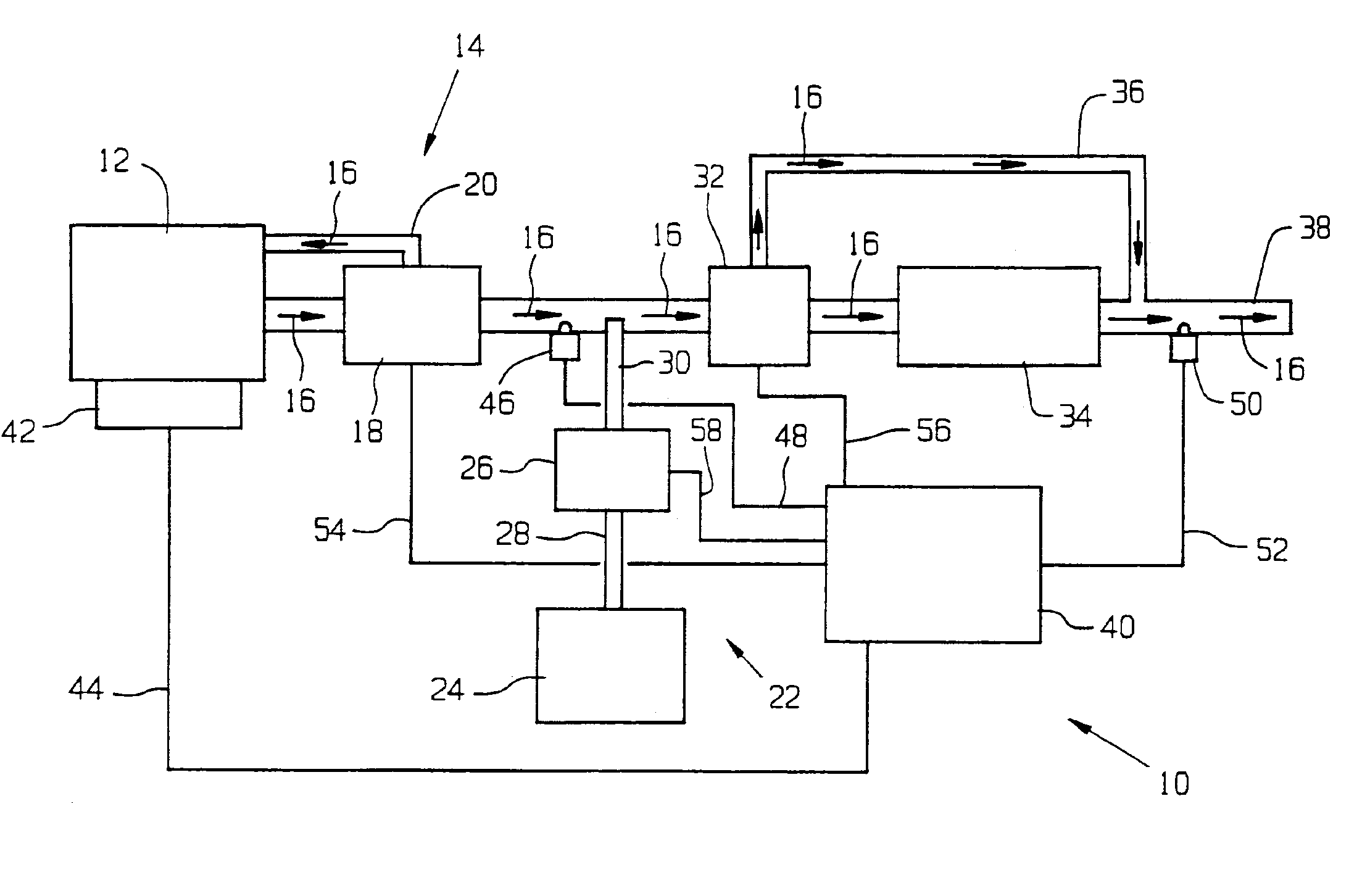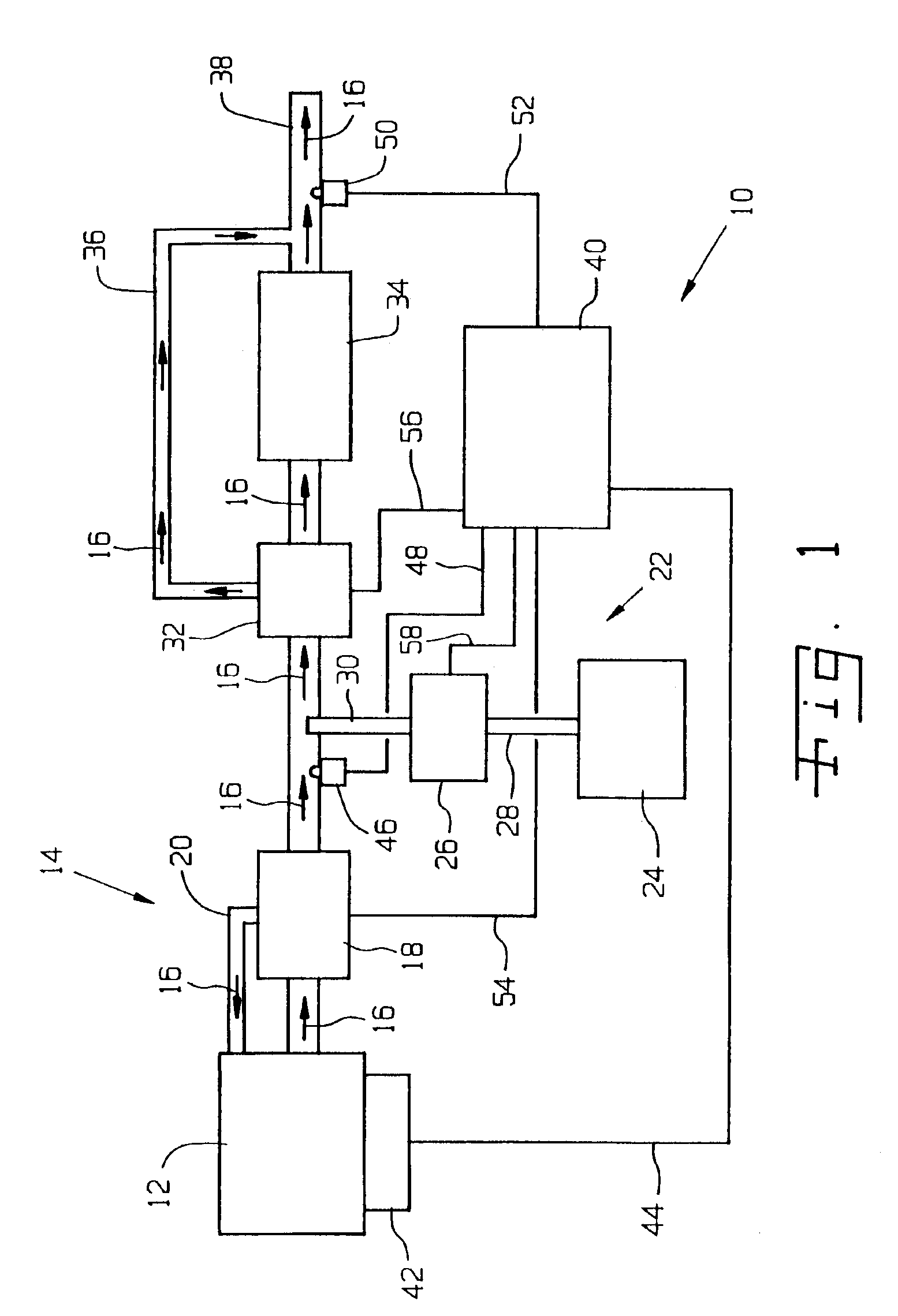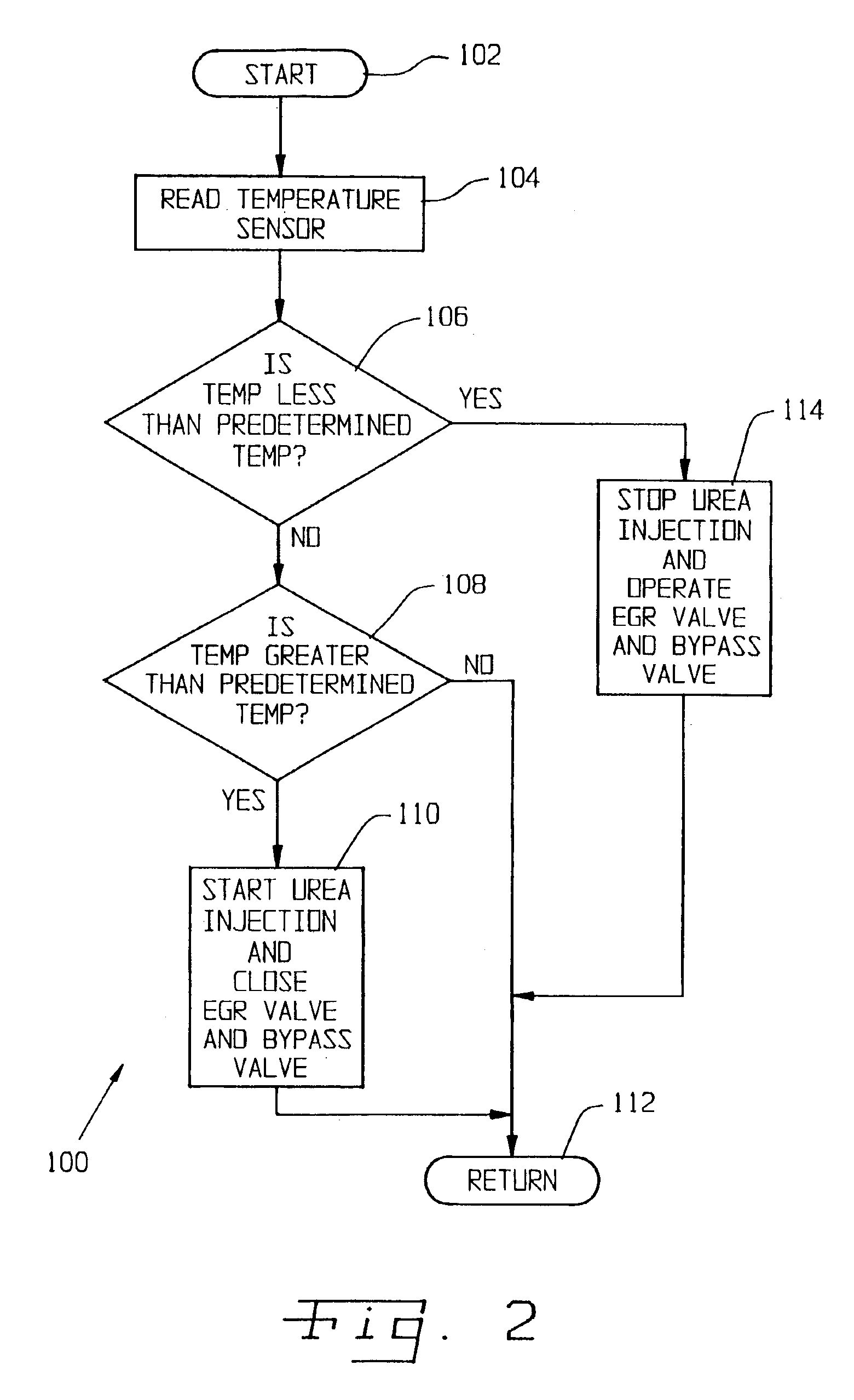Emissions control system for increasing selective catalytic reduction efficiency
a technology of selective catalytic reduction and emission control system, which is applied in the direction of engine starters, electric control, muscle operated starters, etc., can solve the problems of system clogging or plugging, the minimum hydrolysis temperature of the urea solution to reduce the efficiency and the ineffectiveness of the scr catalyst system. achieve the effect of increasing the efficiency of the emissions control system and reducing the nox in the exhaust gas stream
- Summary
- Abstract
- Description
- Claims
- Application Information
AI Technical Summary
Benefits of technology
Problems solved by technology
Method used
Image
Examples
Embodiment Construction
Referring now to the drawings, FIG. 1 illustrates an emissions control system 10 constructed according to the present invention. The emissions control system 10 is used to control the emissions from a compression ignition engine 12, such as a diesel engine. The engine 12 includes an exhaust system 14 in which an exhaust gas stream, indicated by arrows 16, is produced. The exhaust system 14 includes one or more exhaust gas recirculation (EGR) valves 18 which are capable of being metered in order to direct all, a portion, or none of the exhaust gas stream 16 back into the engine 12 through an intake manifold 20.
The exhaust gas stream 16 is provided toward an ammonia generator system 22 which is capable of injecting a reduction agent into the exhaust gas stream 16. The system 22 includes a storage tank 24 for storing a reactant such as urea solution. The urea solution is drawn out of the tank 24 by a pump 26 through a conduit 28. Although not shown, the tank 24 may include a fill port ...
PUM
 Login to View More
Login to View More Abstract
Description
Claims
Application Information
 Login to View More
Login to View More - R&D
- Intellectual Property
- Life Sciences
- Materials
- Tech Scout
- Unparalleled Data Quality
- Higher Quality Content
- 60% Fewer Hallucinations
Browse by: Latest US Patents, China's latest patents, Technical Efficacy Thesaurus, Application Domain, Technology Topic, Popular Technical Reports.
© 2025 PatSnap. All rights reserved.Legal|Privacy policy|Modern Slavery Act Transparency Statement|Sitemap|About US| Contact US: help@patsnap.com



